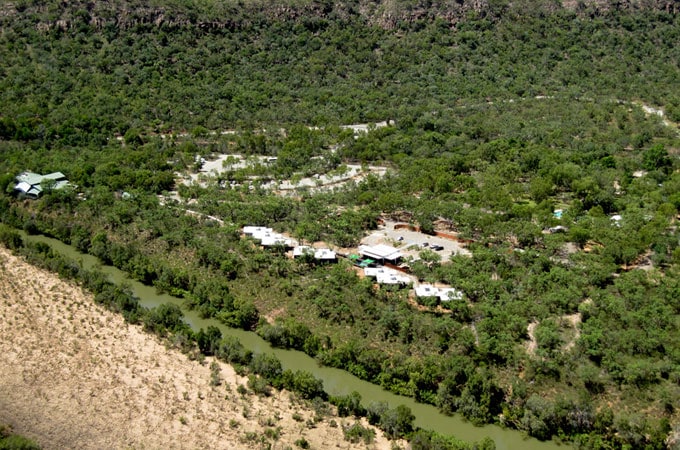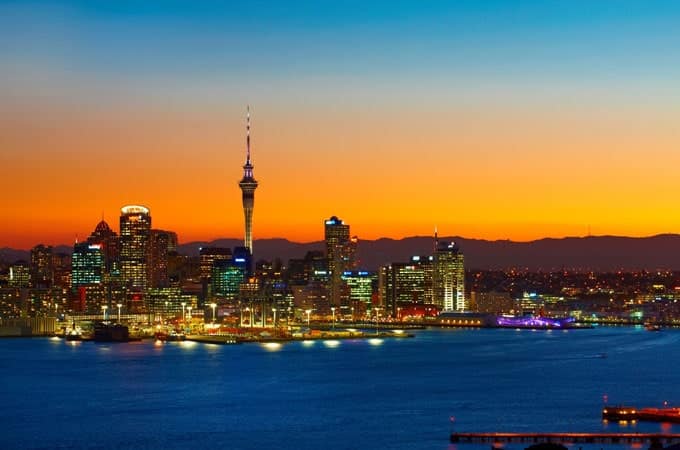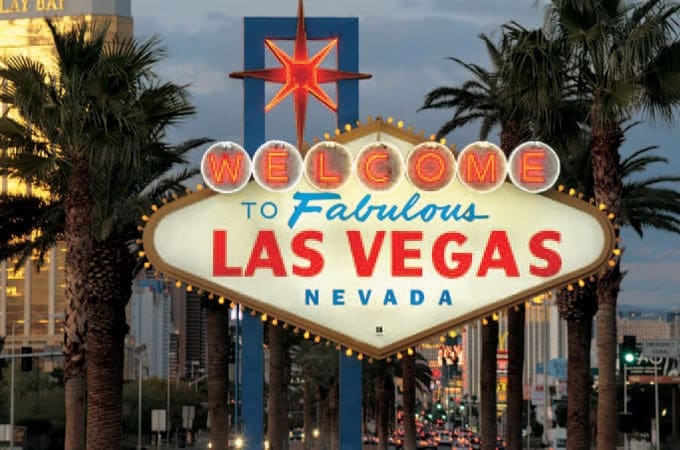If you’re an adventure lover or looking for a romantic escape away from the crowds, there’s nowhere else on Earth like Namibia, writes Ginny Cumming.
As someone who’s been lucky enough to visit southern Africa a number of times, I was simply not prepared for my recent trip to Namibia.
Sitting just above South Africa on the west coast of the continent, it’s one of the last truly wild places on the planet. The word ‘remote’ may be overused in many places, but not in Namibia. After Mongolia, it’s the least-populated nation on Earth.
And while it may be short on people, Namibia has some of the most jaw-dropping and unique landscapes on the planet. They will elicit awe… and a bazillion Insta posts.
Once upon a time Namibia’s epic emptiness tended to attract only the most intrepid of travellers. But these days, desolation is de rigueur and thanks to exquisite new lodges and camps opening every year, the country is now top of the list for savvy travellers looking for a holiday that combines equal parts adventure and luxury.
It doesn’t hurt that Namibia is also, perhaps surprisingly, really accessible. The roads are decent — and there aren’t many people on them. As a result, self-drive travel has exploded. Escorted tours and fly-drive hybrid holidays are other popular options, but whatever option you choose there’s a well-worn tourist route in Namibia, and your itinerary is definitely going to include at least a couple of the hot spots listed below. Their names might not trip off your tongue, but the memories of them will remain burned into your soul forever. Just remember: it’s a huge country with vast distances between attractions, so be sure to download a banging road trip playlist and pack plenty of snacks!
Sossusvlei

This is probably Namibia’s most famous and popular tourist attraction. Sossusvlei is actually the name of a giant salt and clay pan located within one of the largest national parks in Africa, but these days it’s used to refer to the whole region. Most Namibian road trips will include a visit to Sossusvlei, and once you’ve been you’ll totally understand why. The scenery is epic, the colours vivid, and the opportunity to view — and even climb — some of the tallest sand dunes on the planet is hard to resist.
The tallest one of all is called, appropriately, “Big Daddy”. Standing at 325 metres it rewards climbers who reach the top with aching calves and astonishing views. And for the ultimate bragging rights, you can run down one side (very carefully) and descend into Deadvlei.


Even if you’ve never heard of Deadvlei, you’ve probably seen photos of this “Dead Marsh”. Here, the blackened skeletons of 900-year-old camel thorn trees stand in a cracked white-clay pan, backed by Big Daddy and other towering red sand dunes. The trees are long dead but can’t decompose thanks to such a dry, inhospitable environment. The result is a ghostly, surreal forest that’s paradise for photographers.
We explored the region from our lovely camp at Kwessi Dunes about 90 minutes away, where the endless expanse of desert, intense colours and complete lack of other humans (we literally had the entire camp to ourselves) created an out-of-this-world experience. As we quad-biked across the red sands, with mountains rising in the distance and a darkening sky illuminated by both the sun and a full moon, it felt like we were on Mars. Unforgettable.
Related article: A luxurious Kalahari Safari
Etosha National Park

One of the best places to see wildlife in Namibia is Etosha National Park. It’s home to vast plains and a huge range of animals, including four of the Big Five (sorry, buffalo lovers). In the language of the Ovambo tribe Etosha means “great white place”; the perfect name for a park containing a dazzling white salt pan so enormous it can be seen from space. Covering about 4,800 square kilometres, the Etosha Pan is the largest salt pan in Africa, and when the rains come it transforms into a haven for up to a million flamingos.


Another thing that’s special about Etosha National Park is the fact that you can drive through it yourself — you don’t need a guide or even a four-wheel-drive. We took up the (easy) challenge and spent a day enjoying Etosha’s wonders before heading to a private reserve on the other side of the park, where a luxurious property awaited: Onguma The Fort. In a country full of traditional thatched-roof safari lodges, Onguma The Fort is unique, with an aesthetic that’s more ‘classical-African-safari-meets Morocco’. There are 13 glam suites, a beautiful infinity pool, and a terrace where you can dine alfresco and watch animals come to drink in the nearby watering hole.
And if you can tear yourself away from The Fort, it offers an extraordinary sleepout experience: just you and your partner in a custom-built Land Cruiser in the middle of nowhere. The top deck of the “Dream Cruiser” is dedicated to a romantic mosquito-netted bed and dining area where private chefs will present you with the most extraordinary array of dishes… before leaving you alone in the pristine wilderness for the entire night. Parked next to a waterhole, we lay in bed listening to lions roaring to one another in between drinks, secure in the knowledge that a ranger was only a call away if we needed him. We didn’t. It was an only-in-Africa moment for the ages.
Related: Explore Africa’s Beauty on a Luxurious Three-Country Honeymoon Adventure
The Skeleton Coast

Stretching for 500 kilometres along Namibia’s western coastline, this incredibly wild and desolate region is the place where the world’s oldest desert, the Namib, meets the unforgiving Atlantic. It’s named for the many shipwrecks that dot the Skeleton Coast’s shores, as well as the remains of whales and seals that can be found on its beaches. It’s one of the most eerily empty and hostile places in all of Africa: no wonder the indigenous San people called it, “The Land God Made in Anger”.
But thanks to its epic otherworldliness, it’s also a place that you’ll definitely want to visit. We stayed at Shipwreck Lodge, which from Namibia’s capital Windhoek is an eight-hour drive or a quick 90-minute Jeep drive after a two-and-a-half-hour flight in a tiny plane. Getting a bird’s-eye view of the endless waves of white sand dunes was a true bucket-list moment.
Thanks to its unique design and dramatic setting, when Shipwreck Lodge opened in 2018 it was instantly iconic. It features ten cabins that rise out of sand dunes and resemble old, weathered shipwrecks, like the ones that have littered the treacherous, mist-shrouded coastline for centuries. This is one of the most untouched parts in all of Africa, and you’ll feel as though you’re at the end of the world — in the best possible way.
But there’s actually an incredible range of things to see and do here. You can go on game drives or walking safaris to see a surprising amount of wildlife, including elusive desert-adapted lions and elephants, and a massive, loud and very stinky seal colony. There are unique places to explore, such as the Hoarusib River and the striking geological formation that is the Clay Castles, as well as quad biking, stargazing and sundowners to enjoy in the soaring dunes.
Related: The ultimate honeymoon guide to South Africa
Kaokoland

Inland from the Skeleton Coast you’ll find the beautiful Kaokoland region, home to towering mountains, vast desert plains, the ephemeral Hoanib River… and the exquisite Hoanib Valley Camp. Arriving in the dark of night we could only imagine our surrounds, but the following morning its mysteries were revealed. The camp and its setting are spectacular, with just six luxury guest tents and a main tented lounge/dining area arranged in an arc in a hidden valley, surrounded by jagged mountains. Photos simply don’t do it justice.
We spent a lot of time at Hoanib Valley Camp under the stars, drinking G&Ts around the fire, eating delicious dinners under the Milky Way and listening to the staff erupt into traditional African songs. We also visited a local village, home to members of one of the last semi-nomadic groups in Africa, the Himba people. Draped in goatskins and jewellery, the Himba women are famous for the ochre paste they slather on their skin and intricately styled hair. The ochre, combined with oils and local herbs, protects the women from the sun, emits a gorgeous fragrance, looks incredible in photos… and will definitely rub off on your clothes (don’t worry, it easily washes out!).


But the main activity at Hoanib Valley Camp is, of course, tracking local wildlife, including endangered rhino, desertadapted elephant, giraffe and, if you’re very lucky, lion. Our lion luck was lacking, but we spent an exhilarating day tracking a black rhino in some of the most forbidding landscapes I’ve ever encountered. For eight hours we drove, hiked, searched and snacked… and didn’t see another soul. I am happy to report, however, that we did find our rhino. It was a perfect day, ending with the most glorious surprise that I cannot mention for fear of ruining the experience for future visitors, but suffice it to say our holiday cup runneth over.
Damaraland

Most first-time visitors to Namibia will have never heard of this vast and untamed part of the country. Sandwiched between the Skeleton Coast and Etosha National Park, it’s home to epic desert-scapes, dramatic rock formations, Namibia’s highest mountain, a 280-million-year-old petrified forest, ancient rock art and an enormous crater that was created by a meteorite crashing to Earth.
And then there are the animals. You’ll tick a number of species off your wildlife bingo card here, but it’s the desert-adapted elephant, black rhino and lion that are the real drawcards. There are no guarantees when you’re tracking any wildlife in Africa, but this is especially true if you’re tracking Namibia’s desert-adapted animals. Not only are densities low, but they also have to roam huge areas to find water, so be prepared to drive vast distances in order to find them: in the desert, you’ve got to really work to see wildlife.


Our luck was in and we spent a glorious day tracking marvellous desert-adapted elephants, before heading back for drinks by the pool at the exquisite Onduli Ridge. There are just six guest rooms at this contemporary and über-luxurious safari camp, where they also offer an unforgettable Star Bed experience. When they say you’ll be sleeping under the stars, they really mean it here. Your bed is literally wheeled onto your private deck, a “bush baby” (aka hot water bottle) is popped under the covers, and you’re left to enjoy starry slumbers with zero light pollution and the Milky Way stretching above you like a mesmerising galactic artwork. Trust me, you won’t want to sleep.
Related: The Best African Safari Honeymoon Destinations
For an unforgettable Namibian adventure, contact Jono or Danica at Encompass Africa. www.encompassafrica.com.au




